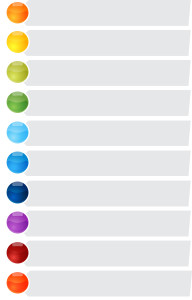More About Using Skeletons to Bring Life to Your Blog
In the delightful little book Unfortunate English: The Gloomy Truth Behind the Words You Use, you can find a treasure chest of fun ideas for livening up business blog posts. Author Bill Brohough alerts readers to the fact that many of the words we use daily used to have very war-related, sexually oriented, or even disgusting meanings.
Last week in this Say It For You blog, I suggested several ways in which that collection of verbal “skeletons” which Brohough put together can be used to enliven blog marketing content for different types of businesses and professional practices,.  Those word “skeletons” can be use, I explained:
Those word “skeletons” can be use, I explained:
- to define basic terminology or give basic information to readers
- to explain why this practitioner or business owner chooses to operate in a certain way:
After all, every business blogger faces the challenge of creating material about the same subject over long periods of time, and anything we can use to deepen and broaden and generally “freshen up” the topic tends to be a good thing.
Two words we’re used to seeing in marketing content, terms used to describe everything from clothing to home décor to autos, for example, are “sophisticated” and “luxury”. Today, Brohough points out, if you call something or someone “sophisticated”, you mean cultured and refined. The original meaning of the word was quite different. To “sophisticate” something was to adulterate it by mixing it with something inferior, and being sophisticated meant the opposite of genuine. The word “luxury”, Brohough adds, has a similarly shady past. The Old French word meant “indulging in abundance”, lacking in taste, or even lecherous.
In corporate blog writing, the target audience dictates the nature of the content, including the writing tone and style, the length of the posts, which keyword phrases to include, and what the Calls to Action will be. But, even with all those preparations made and research done, writers need to maintain a full content “quiver” (with the arrows pointing in the right direction!).
Trivia such as those in Unfortunate English can add a dash of humor and a whole lot of new interest to business blog marketing content!


 “There’s little that our brains crave more than effortlessly acquired data,”
“There’s little that our brains crave more than effortlessly acquired data,” 

Follow us online!